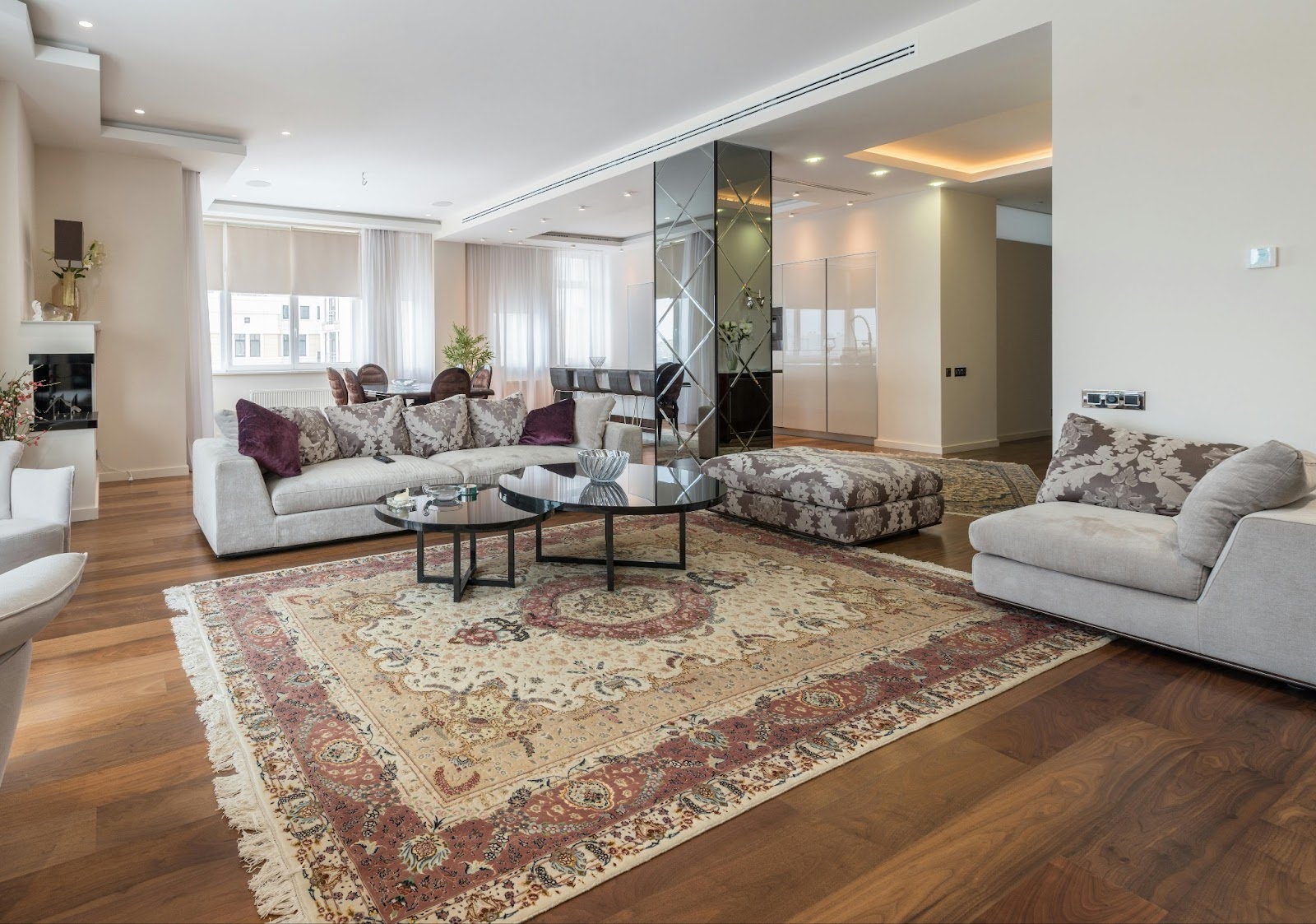Jan 2, 2025
•
Onton Team
Use Onton Imagine to reimagine your living room 10 different ways using your free weekly renderings.
Living rooms don’t serve just one purpose. They can be a tranquil sanctuary to unwind after a long day, a place to gather for game nights, or the centerpiece of a home. But regardless of what you use your living room for, renovating it can be a huge undertaking. So, before digging in, use Onton Imagine to envision dozens of styles and simplify your design journey.
Visualize endless design options and pick your favorite styles
As with any renovation, you’ll start with an assessment of the features of your existing space. Does your living room have tall ceilings, unique cutouts, pillars, or a fireplace? These features may lead you to a fitting design style or influence your final design.
For example, with the mirrored pillar in our living room image above, we’re off to a great start for a Hollywood Glam look. Or the tall ceilings are the perfect foundation for Baroque ceiling murals.
However, you don’t have to feel restricted by the features of your existing living room. Onton lets you test out 10 of your favorite style contenders for free each week — until you land on the ideal vision for your living room makeover.
We’ll show you how in this step-by-step guide.
1. Learn more about your favorite styles
To help narrow down your favorite aesthetics to your top ten, we suggest starting with a rundown of the key components of the most popular design styles in our comprehensive interior design handbook. Then, go in-depth on specific styles, such as Cottagecore or Shabby Chic, over on the Onton blog.
Once you know the basics, factor in any existing features you want to keep, the vibe you want from the end result, or your favorite decor types. For example, the Baroque style will highlight high ceilings while celebrating ornate decor, making it the perfect fit for our first living room redo.

About Baroque Style: Popularized in Europe in the 17th to mid-18th century, The Baroque style celebrates ornate and elaborate designs with heavy use of murals, gilded surfaces, warm colors, and luxurious materials.
2. Look into substyles or variants of your favorite styles
Not all styles adhere to one strict set of rules and key features, however. Many feature their own unique approaches as offshoots of the primary design. If you like elements of a particular style but aren’t crazy about the overall look, check out the different versions of the aesthetic and include the substyle into your prompt to achieve different results.
Learning how to differentiate the colors, textures, furniture, and lighting of a style’s subcategories will help your designs evolve and become more accurate to your vision. For instance, Traditional Minimalism focuses on neutral colors and little to no artwork. But in the Bauhaus subgenre, primary colors and geometric forms create simplistic but exciting spaces.
Once you understand the differences and key features of substyles, it changes how you will prompt. For example, prompting “Bauhaus living room that features red, yellow, and blue accents and sleek furniture” will get you a living room that strays from the greys and whites of a Traditional Minimalist space.

About Minimalist Style: Create a simple, clutter-free space with Minimalist Style using neutral colors and sleek furniture.
3. Create a detailed prompt
Next, head over to Onton Imagine and prompt the algorithm to create the living room you’re envisioning. To get the details just right, we recommend starting with our upload feature. It will help you visualize the changes using the layout and features of your existing space.
Start with a well-lit, clear photo of your space.
Choose “Yes” under “Upload existing room?” to add your own photo.
Next, choose your room type. We’re going to design a living room.
Then choose a style from the dropdown. We started with Cosmic Chic, but you can start with any of our 40+ styles.
Finally, follow the tips in this article to see how different prompts affect your results.
For your first prompt, the more details you include, the closer the image will be to what you have in mind. For example, instead of “Cosmic Chic living room with star motifs and dark color palette,” try something a little more detailed. We started by choosing Cosmic Chic from the style dropdown and then wrote our prompt: “Living room with a palette of deep blue, indigo, and black. Add celestial wallpaper. The furniture has sleek lines with velvet and metallic finishes. Include a statement starburst chandelier, ambient LED lighting, and a coffee table with a chrome finish.”
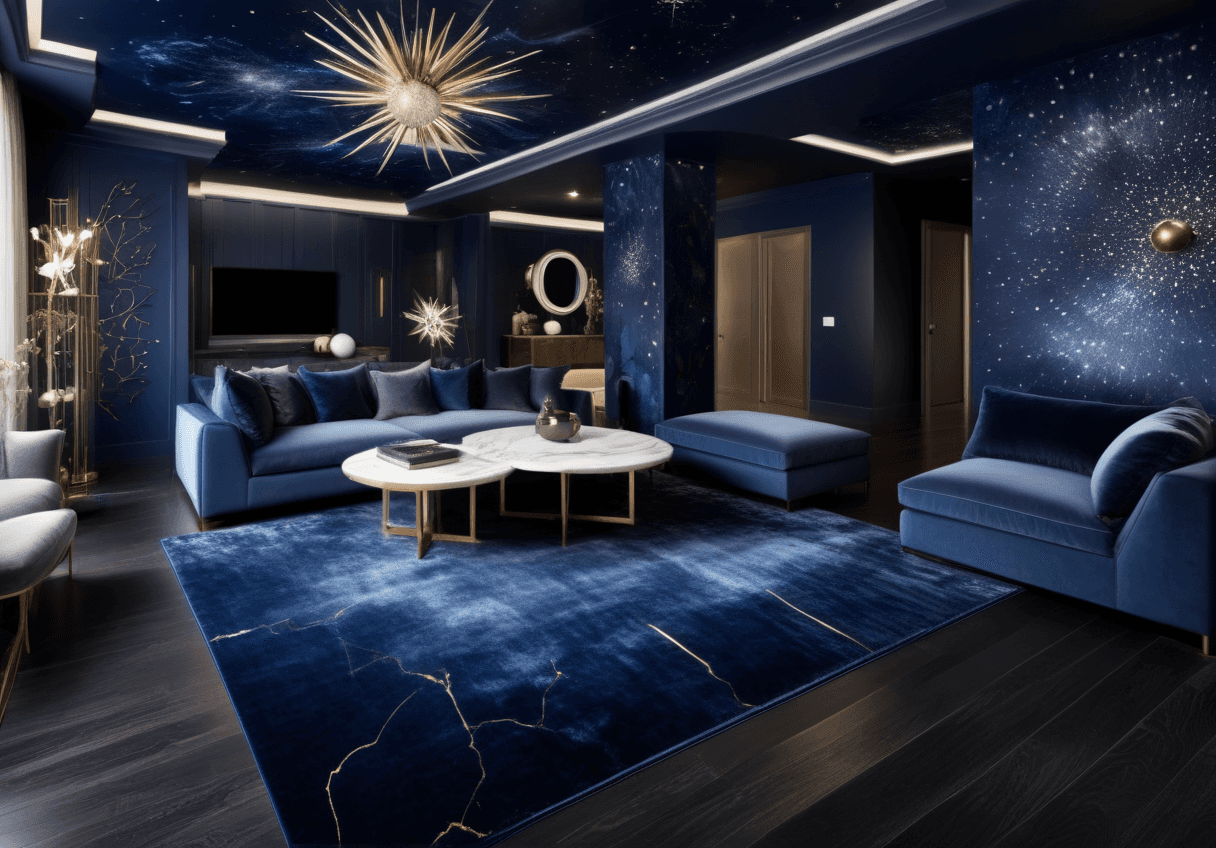
About Cosmic Chic Style: With the Space Age of the mid-20th century, cosmic themes became popular. Today’s Cosmic Chic designs feature dark color palettes of blues, purples, and blacks, combined with celestial motifs like stars, constellations, and planets.
4. Focus on the main features
The key to creating your first few prompts is to focus on what you want to see, not what you don’t. Start with the decorations, colors, and patterns you want in your final result.
For example, to transform our living room into a Cottagecore space, we used “Cozy cottagecore living room with vintage charm, featuring soft pastel colors, floral patterns, wooden furniture, and lots of natural light. Include plants, lace curtains, a rustic bookshelf, and throw pillows on the sofa.” This gave us soft, almost neutral pastels and minimalist floral patterns.
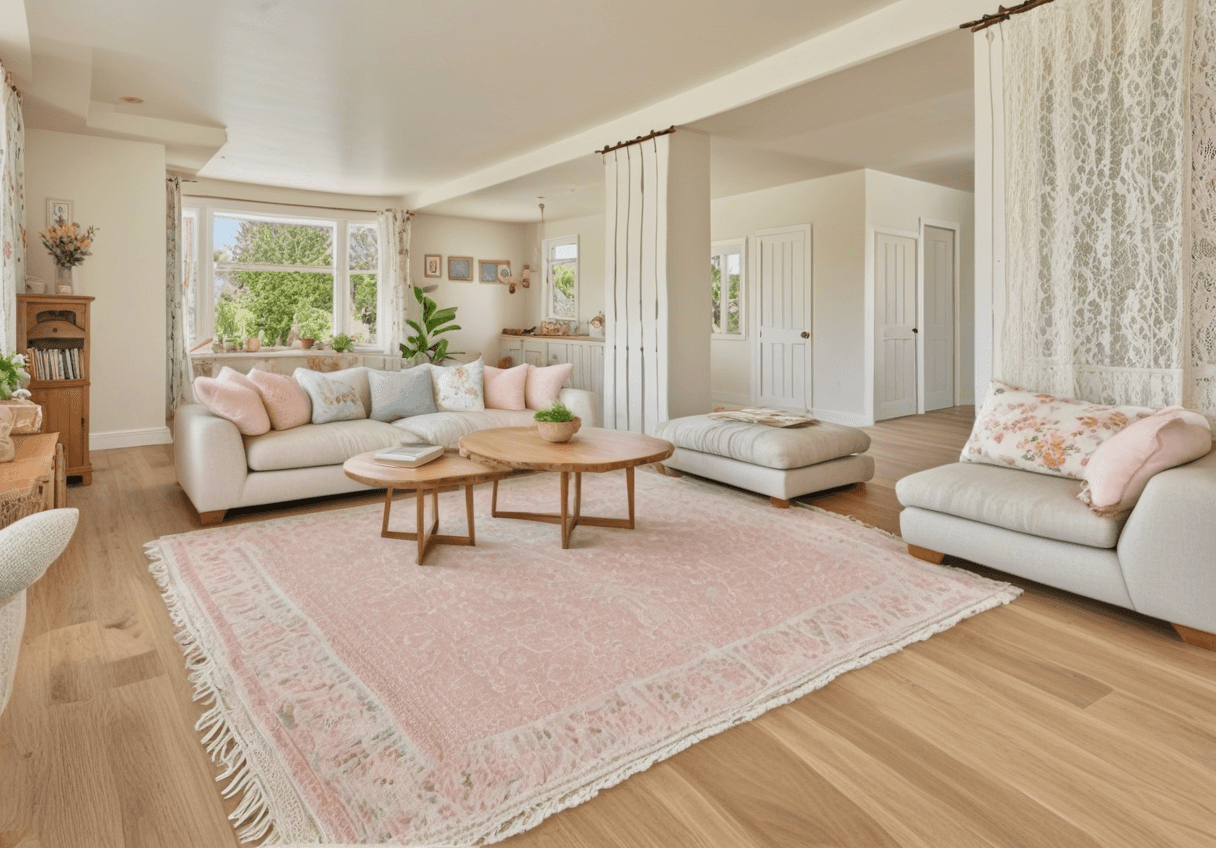
About Cottagecore Style: Cottagecore style is rooted in the 19th century, but gained popularity in the 21st century due to the tranquility and nostalgia invoked by the calm colors, whimsical vibe, and delicate textures.
5. Include extra details to get more refined results
Your first (or second or third) rendering won’t always be exactly what you’re looking for. As you continue rendering, note what you liked from the first few rounds, including more details in the next prompts. For example, to update our initial Cottagecore design, we wanted to feature more rustic elements and lean into a truly neutral color palette.
So we added woven baskets, vintage accent pieces, and stone walls — elements of a French Country living room. We kept the same large pieces and overall layout each time, but we switched to a monochromatic color scheme that we accented with stone instead of florals.
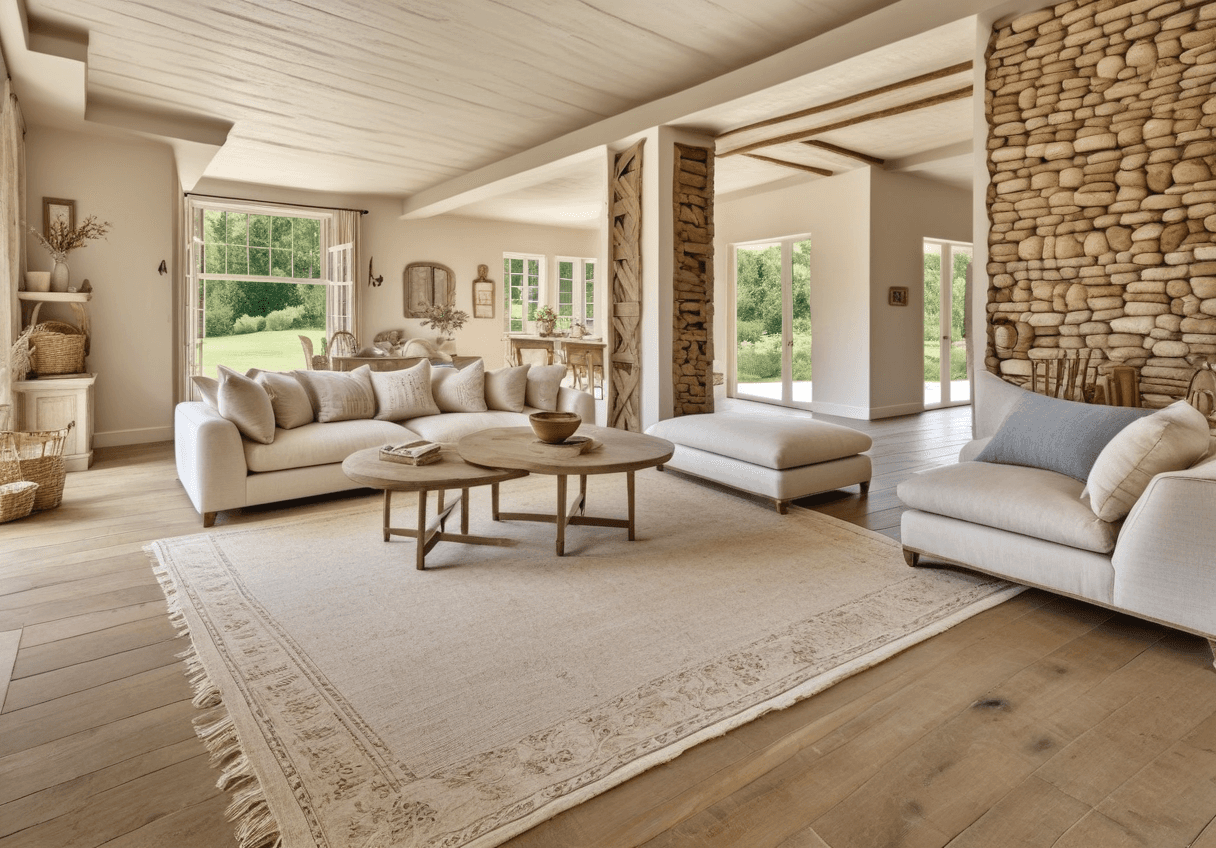
About French Country Style: With historical elements and pops of gilded decor, French Country design combines warm neutrals and gilded accents with weathered finishes and pops of muted color to achieve a refined, lived-in look.
6. Be precise about color palettes
Picking the right color palette will make or break a space. When prompting, include the colors you want to see, not the ones you don’t. If you aren’t quite sure about the specific colors you want, you can use keywords like “neutrals” or “pastels” to stick to general color palettes.
If you know the specific colors you want, include them in the prompt by saying something like, “Use a palette of soft whites, pastel pinks, and beiges.” We used this prompt for a Shabby Chic-styled room to boost the pink from our Cottagecore design, adding in even more florals.

About Shabby Chic Style: Shabby Chic Style seamlessly blends Vintage and Cottagecore elements, such as soft pastels, worn in wood, and vintage florals to create warm spaces.
7. Get specific about textures
Different styles utilize different textures, so it is important to be specific about the materials you want to see in your final image. Simply describing the style or color of a couch, table, or rug won’t guarantee what materials the AI will render. For example, a pink and green color scheme fits a variety of design styles, including Shabby Chic, Art Deco, and Cottagecore.
So use textile descriptors like “velvet” or “shag” to get the look you want. We specified “green velvet couch with animal print shag rug” rather than just “green couch with animal print rug” to ensure the proper textures. By approaching the design with unique textures, fun patterns, and more saturated pinks and greens, the result encapsulates the muchness of Maximalist design.
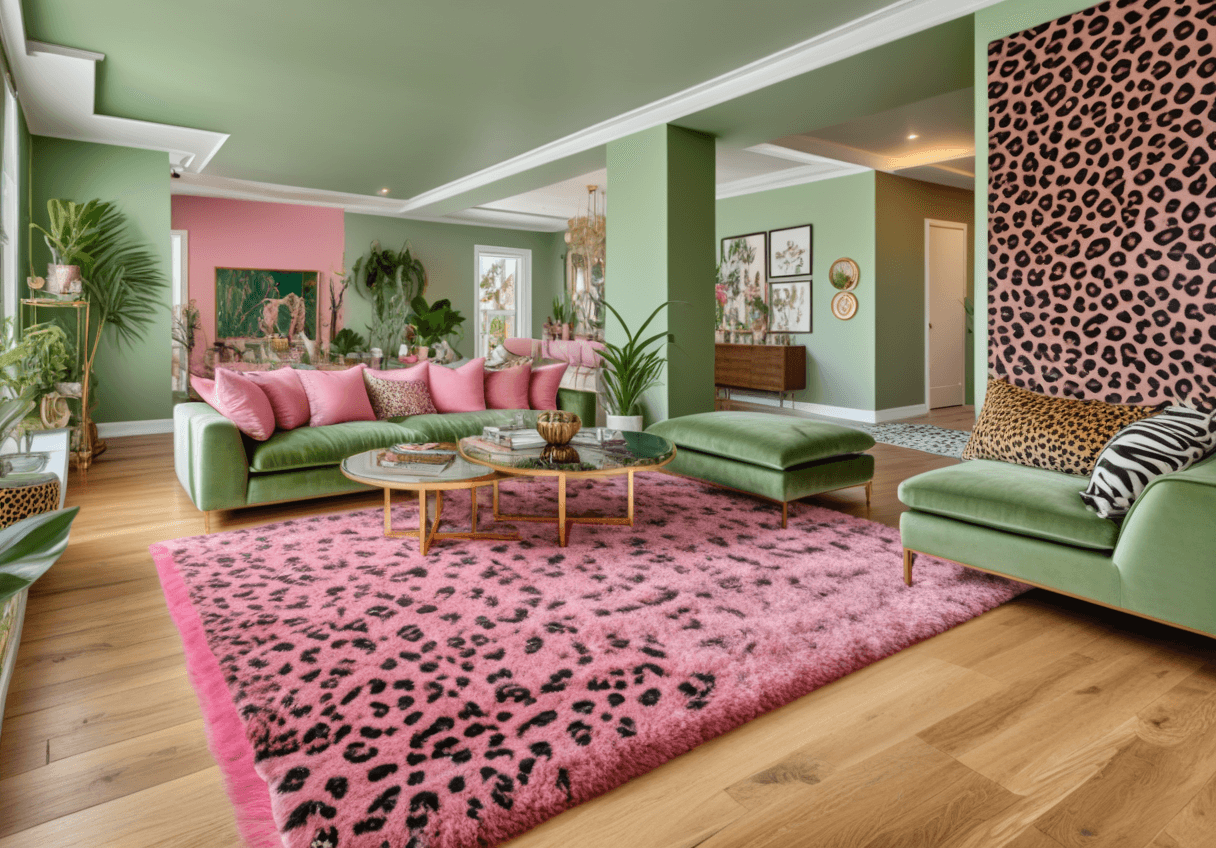
About Maximalist Style: To achieve a Maximalist Style, you have to embrace the “more is more” philosophy. It is a rich combination of bold colors, eccentric decor, and pattern mixing that creates highly individualized spaces.
8. Don’t ignore the lighting
So far, our lighting hasn’t changed much. However, many aesthetics have notable lighting styles necessary to achieve a cohesive final look. To try different lighting schemes, specify in your prompt whether you want natural lighting, warm lighting, bright white lighting, or LED lighting.
To kick it up a notch, describe the lighting fixtures desired in the final result. For example, the Rustic style is known to use raw wood chandeliers or metal lanterns with exposed bulbs to achieve a room with warm, soft ambient lighting.
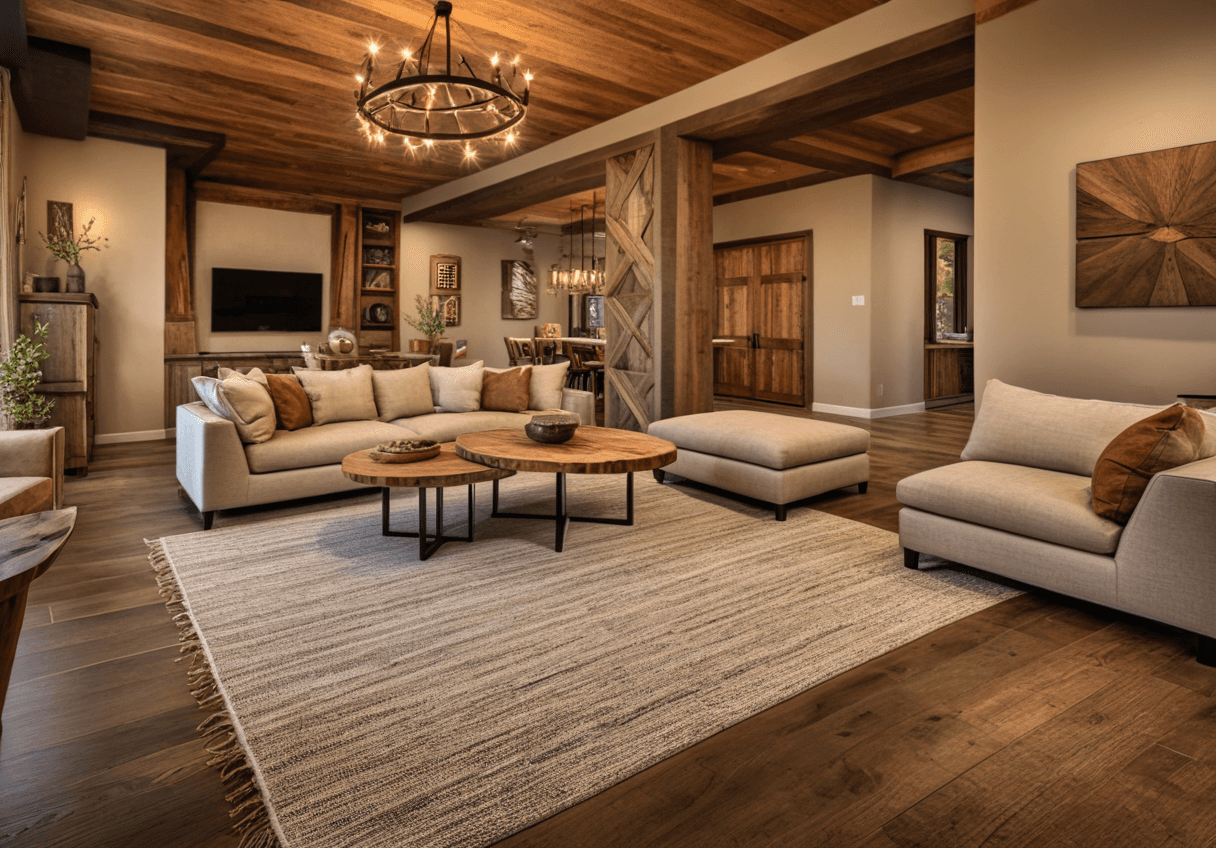
About Rustic Style: To get the rugged look of Rustic Style, combine natural materials, earthy colors, warm lighting, and handcrafted pieces.
9. Utilize negative prompts
Now, if you’re ready for a big change, let’s start a new prompt from scratch. This time we’ll exclude certain features from our prompt by switching the “Include negative prompts” toggle to the “On” position. From here, you can avoid any design element, such as the color pink or a particular feature, like curtains.
For example, Hollywood Glam rooms are known for including opulent chandeliers, but if that doesn’t fit with the plans of your space, you can leave it out by typing “chandeliers” into the negative prompt.
Then prompt the AI to replace your current lights and sconces with more glamorous fixtures while leaving the recessed lighting in place. This will still help you visualize the Hollywood Glam look while avoiding the trouble of rewiring for a big chandelier.
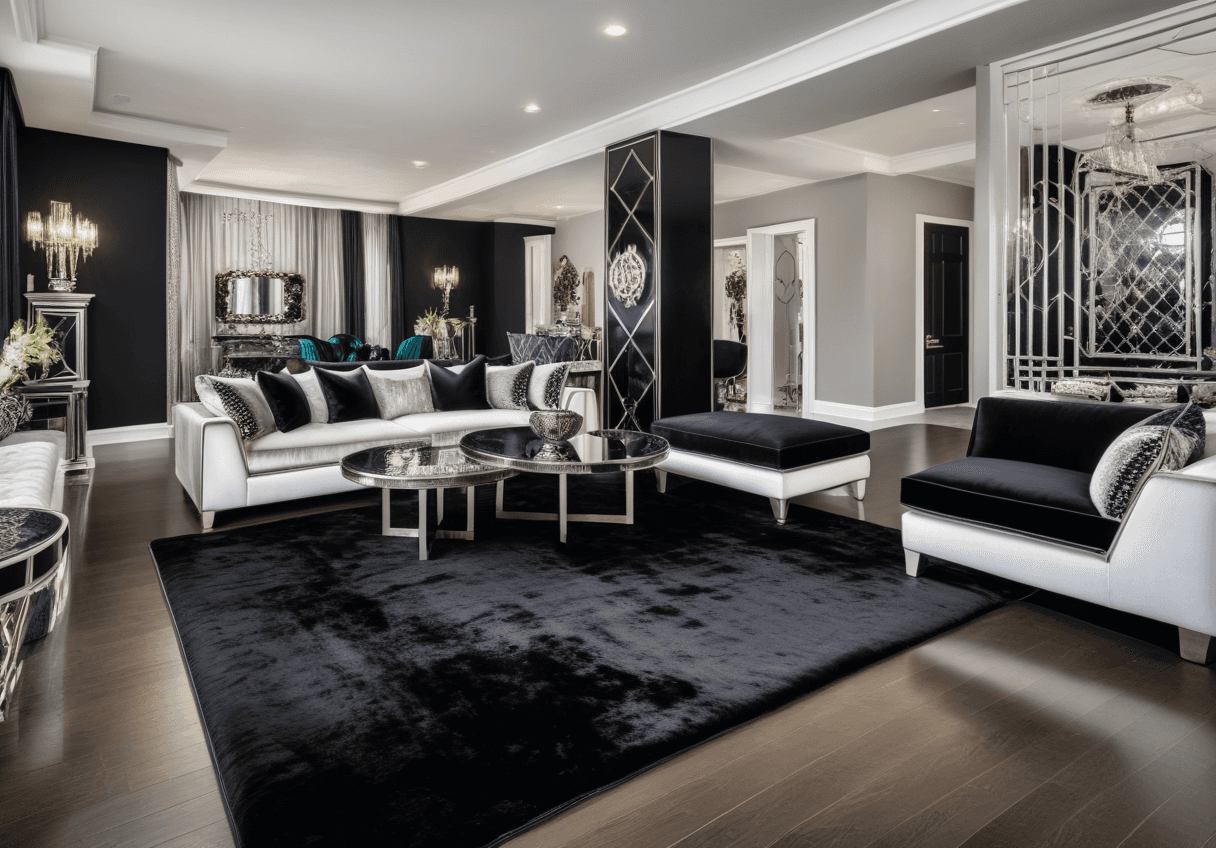
About Hollywood Glam Style: Hollywood Glam combines influences of Art Deco and Mid-Century Modern by balancing luxurious fabrics, metallics, and reflective surfaces with sleek furniture.
10. Replace and remove items
Now, let’s say we didn’t like a chandelier-like fixture in our Hollywood Glam rendering. One piece out of place doesn’t call for a complete do-over. We can simply use the “remove” feature to take it out of the room. Just highlight the unwanted object and its shadows, and then hit render to see the room without the item.
It’s also easy to replace an item with a new one. For instance, Vintage style relies heavily on eclecticism, which may include items that you’re not a fan of. If that happens, use the “edit” feature to select it and prompt what you would like to see in its place. For example, if there is a painting where you’d prefer to have a mirror, highlight it and prompt “replace with vintage mirror.”
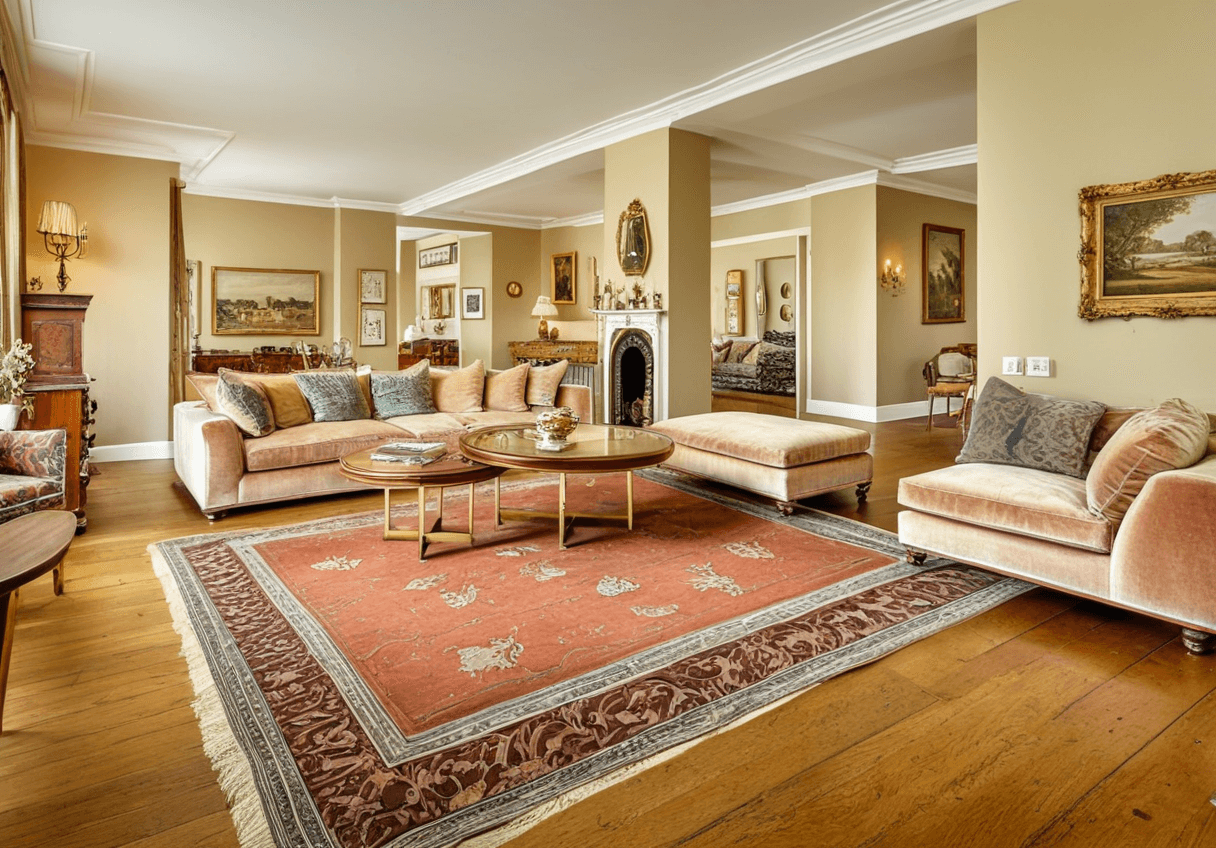
About Vintage Style: Get the vintage look by incorporating pieces that are 20 years old (or more), or add pieces that are inspired by vintage aesthetics.
Using Onton to design the living room of your dreams
Unsure where to start? Scroll through endless inspiration curated by fellow users on Onton Discover.
Then, with some fresh ideas brewing, head over to Onton Imagine to create visualizations of your space in seconds, and use Onton Search to locate the perfect pieces from your designs.

